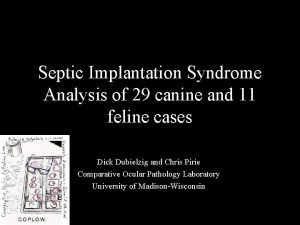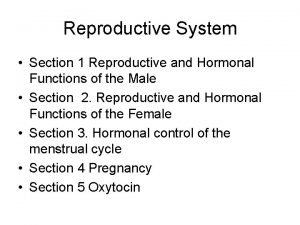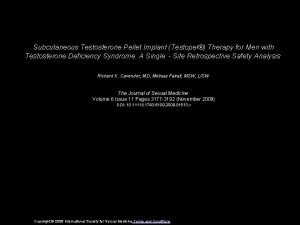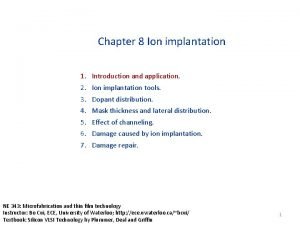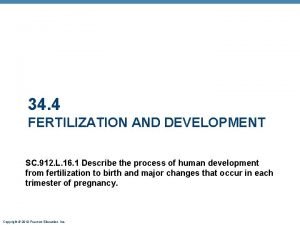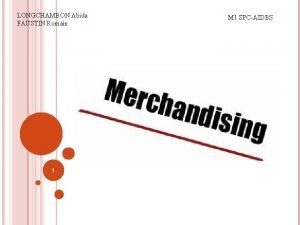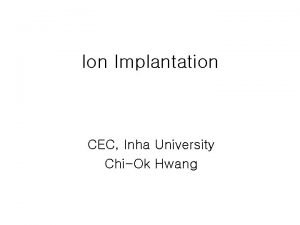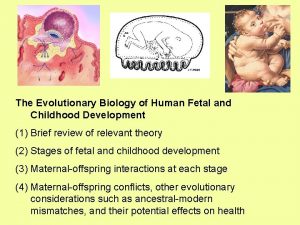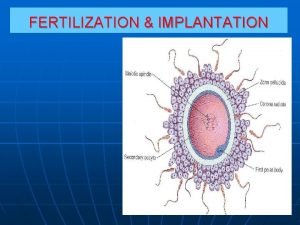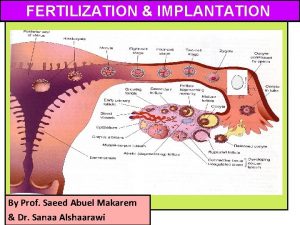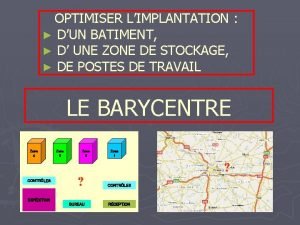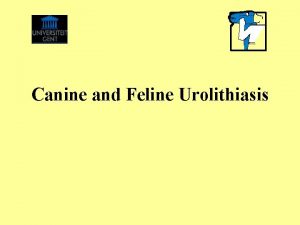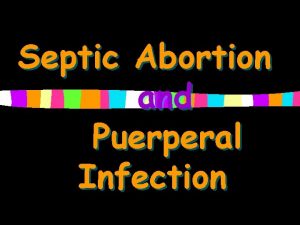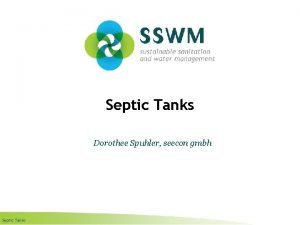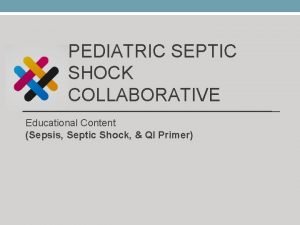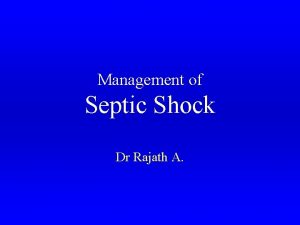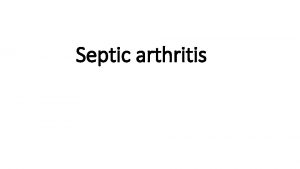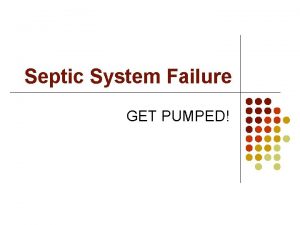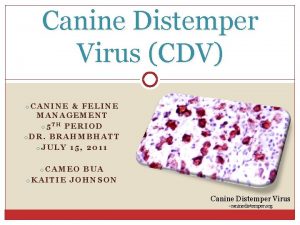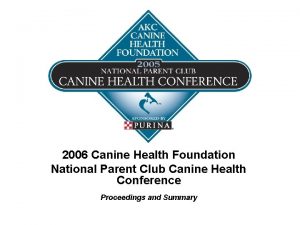Septic Implantation Syndrome Analysis of 29 canine and















- Slides: 15

Septic Implantation Syndrome Analysis of 29 canine and 11 feline cases Dick Dubielzig and Chris Pirie Comparative Ocular Pathology Laboratory University of Madison-Wisconsin







Canine Cases • 29 cases of 9, 300 ocular submissions • 10 documented cases of cat scratch • Typical ophthalmic findings included – chronic, poorly responsive anterior uveitis – cataract formation – +/- anterior or posterior synechiae, corneal scar, and/or glaucoma

Canine Cases • Signalment – Breed • No predilection, however, small breeds and young (<1 year) large breed dogs over represented – Gender • 3 F, 10 FS, 3 M, 12 MC, 1 unknown – Age • Mean 7. 4 years (range 3. 5 months to 15 years)

Canine Cases • Globe involvement – 15 OD vs 14 OS • History – 10 cat scratch vs 19 unknown or suspected • Duration (2 unknown) Known Cat Unknown Total 3 1 4 1 week- 1 month 1 11 12 1 -4 months 5 3 8 >4 months 1 2 3 < 1 week

Canine Cases • Intra-lenticular bacteria – 7 negative of H+E and gram stain – 22 positive for bacteria • 19 gram positive cocci • 2 gram positive rods • 1 gram positive cocci and rods

Feline Cases • 11 cases out of 3, 400 ocular submissions • 2 documented, 9 unknown or suspected cases • Signalment – Breed • 8 DSH, 1 DMH, 1 DLH, 1 Persian – Gender • 5 FS, 1 M, 5 MC – Age • Mean 5. 3 years (range 1 year to 14 years)

Feline Cases • Duration (2 unknown) Known Cat Scratch Unknown Total < 1 week 0 0 0 1 week- 1 month 2 3 5 1 -4 months 0 4 4 • Intra-lenticular bacteria – – – 4 negative of H+E and gram stain 4 gram positive cocci 1 Candida 1 gram positive and negative bacilli 1 gram positive cocci, gram positive and negative bacilli


What about phacoclastic inflammaton? Phacoclastic uveitis is a term used to characterize the inflammation seen around a ruptured lens as is seen in these cases. The term carries with it the implication that the inflammation is caused by the release of lens proteins otherwise sequestered. I believe that in these dogs the inflammation is do to bacterial infection and not simply exposure of lens proteins.
 Septic implantation syndrome
Septic implantation syndrome Lesson 15.4 ovulation fertilization and implantation
Lesson 15.4 ovulation fertilization and implantation Function of testes
Function of testes What does a testosterone pellet look like
What does a testosterone pellet look like Ion implantation
Ion implantation 3 week embryo
3 week embryo Implantation verticale et horizontale
Implantation verticale et horizontale Implantation verticale et horizontale
Implantation verticale et horizontale Ion implantation
Ion implantation Implantation
Implantation Zygote
Zygote Molar pregnancy symptoms
Molar pregnancy symptoms Grand rendez-vous sst
Grand rendez-vous sst Implantation
Implantation Implantation
Implantation Implantation batiment methode
Implantation batiment methode
